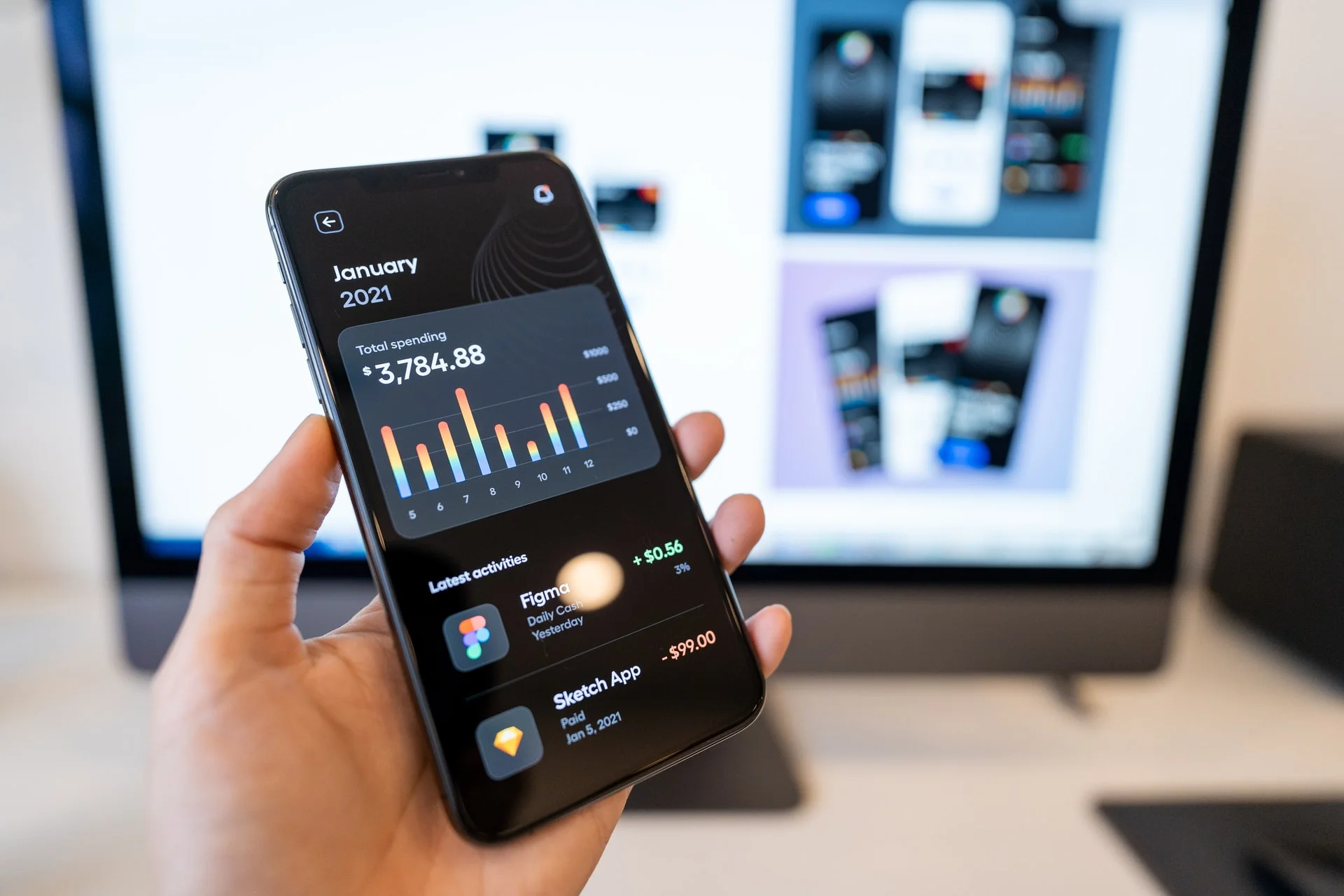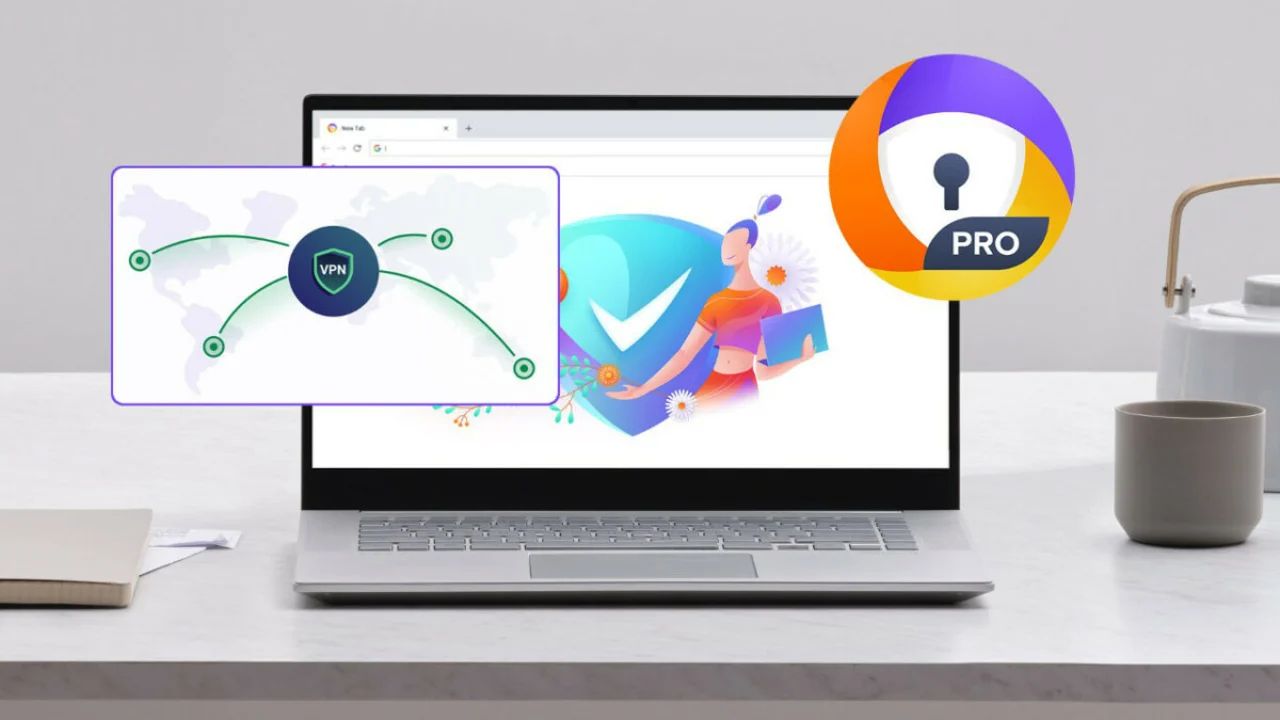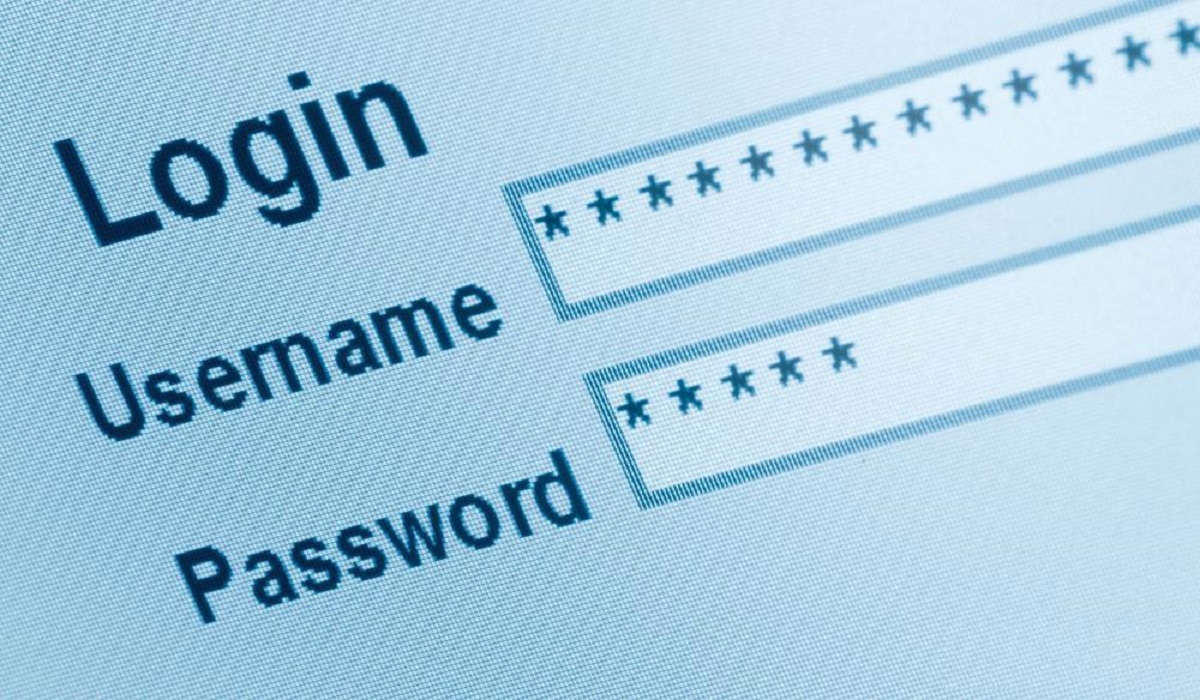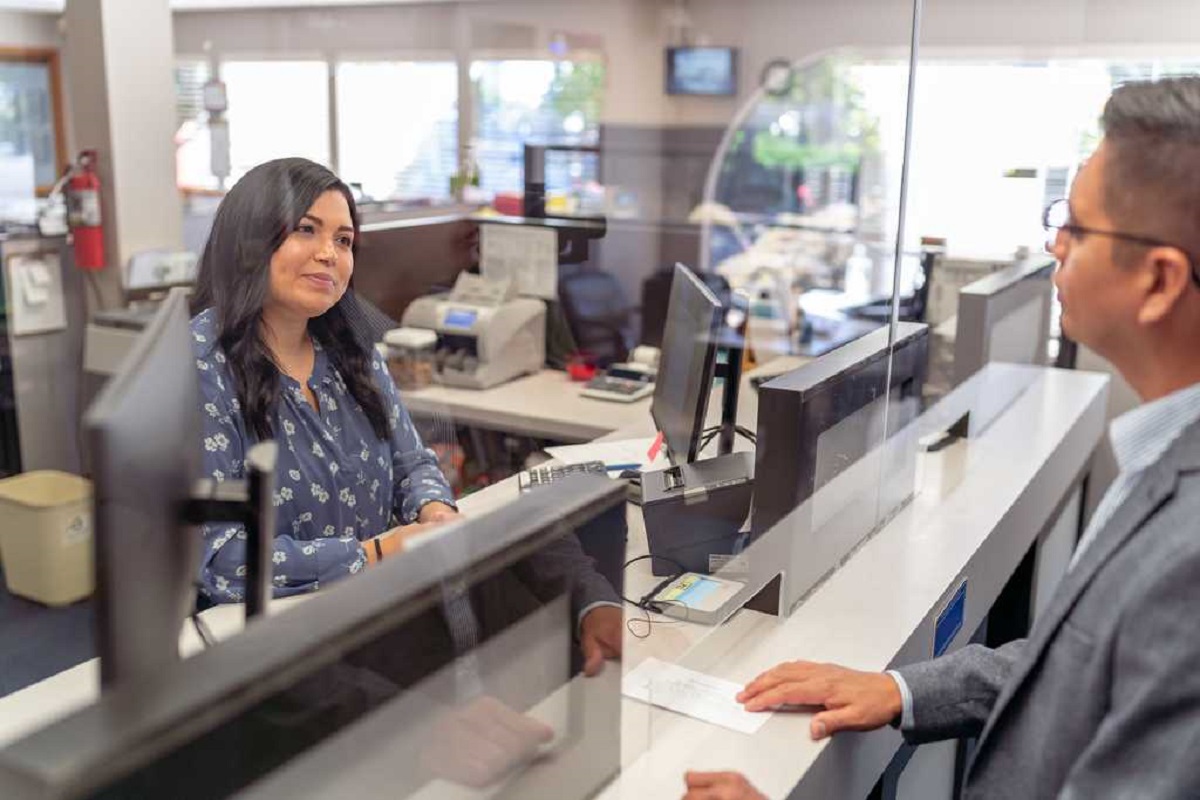Introduction
Welcome to the digital age, where convenience is king and traditional banking is being revolutionized by online platforms. More and more people are turning to online banking as a secure and efficient way to manage their finances from the comfort of their own homes. With just a few clicks, you can check your balances, transfer funds, pay bills, and much more.
In this article, we will guide you through the process of setting up online banking. Whether you are a tech-savvy individual looking to streamline your financial transactions or a newbie to the online banking world, we’ve got you covered. Setting up online banking may seem daunting at first, but with the right information and a little guidance, you’ll be up and running in no time.
Online banking offers numerous advantages over traditional banking methods. Gone are the days of waiting in line at the bank, dealing with paper statements, and manually tracking your transactions. With online banking, you have 24/7 access to your accounts, allowing you to monitor your finances at your convenience. It’s a time-saving and efficient way to manage your money.
Furthermore, online banking provides enhanced security features to protect your personal information and transactions. Banks invest heavily in robust encryption technology and multi-factor authentication processes to ensure that your data remains safe and secure. With constant advancements in cybersecurity, online banking has become more secure than ever before.
Setting up online banking is a straightforward process, and we will walk you through it step by step. Whether you’re setting up a personal account or a business account, the fundamental steps remain the same. So let’s dive in and learn how to set up online banking, empowering you with the convenience and control of managing your finances from your fingertips.
Step 1: Choosing a Bank
The first step in setting up online banking is selecting the right bank for your needs. With so many options available, it’s important to consider factors such as fees, customer service, accessibility, and reputation. Here are some key points to keep in mind when choosing a bank:
- Research and compare: Start by researching different banks in your area or online. Look for information on their website regarding online banking services, fees, and account options. Compare the features and benefits of each bank to identify which one aligns best with your requirements.
- Consider convenience: Choose a bank that offers easy access to online banking, such as a user-friendly website or a mobile banking app. Ensure that the bank’s online platform provides the features and functionality you need to efficiently manage your finances.
- Check fees and charges: Look for banks that offer low or no fees for online banking services, such as monthly maintenance fees or transaction fees. Make sure you understand the fee structure and any potential charges that may apply when using online banking.
- Read reviews and ratings: Check online reviews and ratings for different banks to get an idea of customer satisfaction and the bank’s reputation. Pay attention to feedback about their online banking services, security measures, and customer support.
- Consider customer service: Look for a bank that provides excellent customer service, both online and offline. Prompt and reliable customer support is crucial if you encounter any issues or have questions regarding your online banking experience.
- Review security measures: Ensure that the bank employs robust security measures to protect your information and transactions. Look for features such as two-factor authentication, encryption, and fraud monitoring systems.
Take your time to research and compare different banks before making a decision. Consider your financial goals, preferences, and the features that are important to you. Once you have chosen a bank that meets your criteria, you’re ready to move on to the next step in setting up online banking.
Step 2: Gathering the Required Documents
Now that you’ve chosen a bank, it’s time to gather the necessary documents to set up your online banking account. Each bank may have slightly different requirements, but here are the common documents you’ll typically need:
- Identification: You’ll need a valid government-issued identification document, such as a driver’s license, passport, or national ID card. Make sure the identification document is not expired and includes your full legal name, date of birth, and a clear photo of you.
- Proof of address: Banks require proof of your residential address. This can be a recent utility bill, bank statement, or a rental agreement in your name. Make sure the document includes your full name and current address and is not older than three months.
- Social Security number: In some countries, banks require your social security number or a similar tax identification number to ensure compliance with regulations. Have your social security card or tax identification document handy.
- Contact information: Provide your valid email address and phone number, as banks often send important notifications and verification codes via these channels.
- Employment details: Depending on the bank, you may need to provide information about your employment, such as your job title, employer name, and income details.
It’s important to ensure that all the documents you submit are authentic and up to date. Banks have stringent verification processes to prevent fraud and protect their customers’ identities, so any discrepancies or outdated information may hinder the account setup process.
Before proceeding to the next step, double-check that you have all the required documents in order. Keep in mind that additional documents may be requested depending on your specific circumstances or the bank’s policies.
Once you have gathered all the necessary documents, you’re ready to move on to the next step of setting up your online banking account.
Step 3: Accessing the Bank’s Website
With your required documents in hand, it’s time to access the bank’s website to begin the process of setting up your online banking account. Follow these steps to access the website:
- Launch your web browser: Open the web browser of your choice on your computer, laptop, or mobile device.
- Search for the bank’s website: Type the name of the bank in the search bar or enter the bank’s website URL directly if you know it. Make sure you are accessing the official website of the bank to ensure a secure connection.
- Click on the online banking option: Once you are on the bank’s official website, look for the “Online Banking” or “Sign In/Register” option. This is typically located prominently on the homepage or in the main menu.
- Select the account type: Choose the type of account you wish to set up, such as personal banking, business banking, or any other specialized accounts offered by the bank.
- Click on “Register” or “Sign Up”: Next, you will be directed to the registration page. Click on the “Register” or “Sign Up” option to create a new online banking account.
Once you have successfully accessed the bank’s website and arrived at the registration page, you’re ready to proceed with setting up your online banking account. Remember to stay cautious and vigilant while navigating the website. Verify that the website has a secure connection by checking for a padlock icon in the address bar or ensuring the URL starts with “https://” to protect your personal information.
Now that you’ve reached the registration page, it’s time to move on to the next step of setting up your online banking account.
Step 4: Setting Up an Account
Now that you’ve accessed the bank’s website and reached the registration page, it’s time to set up your online banking account. Follow these steps to complete the account setup process:
- Fill out the registration form: On the registration page, you will be asked to provide personal information such as your name, address, date of birth, and contact details. Fill out the form accurately and ensure that all the information you provide matches the documents you gathered in the previous step.
- Create a username and password: Choose a unique and secure username and password for your online banking account. Ensure that your password is strong, containing a combination of uppercase and lowercase letters, numbers, and symbols. Avoid using easily guessable passwords or personal information.
- Read and accept the terms and conditions: Take the time to read through the bank’s terms and conditions or the online banking agreement. This document outlines the rights and responsibilities of both the bank and the account holder. Once you’ve carefully reviewed it, indicate your acceptance of the terms and conditions by checking the box provided.
- Submit the registration form: Double-check all the information you entered in the registration form for accuracy. Once you are satisfied that everything is correct, click on the “Submit” or “Create Account” button to proceed.
After submitting the registration form, the bank will process your application and verify the information provided. This may take a few minutes or a couple of business days, depending on the bank’s internal processes. You may receive a confirmation email or message once your account setup is complete.
It’s important to note that some banks may require you to visit a branch in person to finalize your account setup or provide additional documentation. If this is the case, follow any instructions provided by the bank to complete the process.
Once your account setup is complete, you will be ready to access your online banking account and explore the various features and services it offers. We’ll delve into those in later steps, but for now, congratulations on successfully setting up your online banking account!
Step 5: Verifying Your Identity
Verifying your identity is an essential step in the online banking setup process to ensure the security of your account and protect against fraud. Banks have various methods of verifying identities, and the exact steps may vary depending on the bank’s procedures. Here are some common methods used for identity verification:
- One-time password (OTP): You may receive an OTP via email, SMS, or a phone call. Enter the OTP in the designated field on the bank’s website to verify your identity.
- Upload identification documents: Some banks may require you to upload scanned copies or clear photos of your identification documents, such as your driver’s license or passport, to verify your identity.
- Answer security questions: The bank may ask you a series of security questions based on your personal information to confirm your identity. Provide accurate answers to these questions to proceed with the verification process.
- Visit a branch: In certain cases, the bank may request that you visit a physical branch to provide identification documents in person or have your identity verified by a bank representative.
During the identity verification process, it’s crucial to follow the bank’s instructions carefully and provide accurate information. Any discrepancies or false information may cause delays or lead to the rejection of your application.
It’s also essential to be vigilant against phishing attempts or scams. Banks will never ask for your login credentials, such as your username or password, through email, SMS, or phone calls. If you receive any suspicious messages or calls asking for your personal or banking information, disregard them and report them to your bank immediately.
Once you have successfully verified your identity, your online banking account will be authenticated, and you will be ready to proceed with the next steps of setting up your online banking features and security measures.
Step 6: Creating Login Credentials
Now that your identity has been verified, it’s time to create your login credentials for your online banking account. Your login credentials, including your username and password, are essential for accessing your account securely. Follow these steps to create strong and secure login credentials:
- Create a unique username: Choose a username that is easy for you to remember but difficult for others to guess. Avoid using personal information or easily identifiable details in your username, as it may compromise the security of your account.
- Choose a strong password: Your password should be a combination of uppercase and lowercase letters, numbers, and symbols. It should be at least eight characters long. Avoid using common passwords or personal information, as these can be easily guessed. Regularly update your password to ensure the security of your account.
- Enable two-factor authentication (2FA): Two-factor authentication adds an extra layer of security to your online banking account. It typically involves receiving a verification code on your mobile device or through an authentication app to confirm your identity when logging in. Enable this feature if your bank offers it for an added level of protection.
- Keep your login credentials secure: It is crucial to keep your login credentials private and secure. Do not share your username, password, or any other sensitive information with anyone. Avoid using the “Remember Me” or “Save Password” feature on public computers or devices that are not secure.
- Regularly change your password: To maintain the security of your online banking account, it is recommended that you change your password regularly. This practice helps protect against unauthorized access and keeps your account information secure.
When creating your login credentials, it’s important to strike a balance between creating something memorable for you and difficult for others to guess. Using a combination of letters, numbers, and symbols will make your password more secure and less susceptible to hacking attempts.
After creating your login credentials, make sure to store them in a secure location that is only accessible to you. Avoid writing them down in easily accessible places or sharing them electronically, as this increases the risk of unauthorized access to your account.
With your login credentials in place, you’re one step closer to fully utilizing the online banking features and services available to you. The next steps will focus on setting up security measures and exploring the various functions of online banking.
Step 7: Linking Your Accounts
One of the key advantages of online banking is the ability to link multiple accounts under one platform, providing a centralized view of your finances. Linking your accounts allows you to conveniently manage and monitor your various financial activities from a single online banking interface. Here’s how you can link your accounts:
- Access your online banking interface: Log in to your online banking account using your username and password.
- Locate the account linking option: Navigate to the account settings or profile section of your online banking interface. Look for an option that allows you to link additional accounts.
- Provide the account details: Follow the prompts or instructions to input the necessary information for the account you want to link. This typically includes the account number, type of account (e.g., checking, savings), and any other relevant details.
- Verify ownership of the linked account: In some cases, the bank may require you to verify your ownership of the account you are attempting to link. This can be done by confirming a small deposit made into the linked account or by providing additional documentation.
- Repeat the process for each account: If you have multiple accounts, you may need to go through the account linking process for each one. Follow the same steps as outlined above to link each additional account.
- Review and confirm linked accounts: Once you have successfully linked all your accounts, review the information for accuracy. Ensure that each account is properly linked and displayed within your online banking interface.
Keep in mind that not all banks allow the linking of external accounts, so it’s important to check with your bank on their specific policies and capabilities regarding account linking.
By linking your accounts, you can conveniently monitor your balances, view transaction history, and transfer funds between accounts from one centralized platform. This streamlines your financial management and provides a comprehensive overview of your financial health.
Now that your accounts are linked, you’re ready to move on to the next step of setting up security measures to ensure the safety of your online banking activities.
Step 8: Setting Up Security Measures
Ensuring the security of your online banking activities is crucial to protect your personal and financial information. Banks provide various security measures to safeguard your accounts. Take the following steps to set up the necessary security measures for your online banking:
- Choose a strong security question: Select a security question and provide an answer that is unique and known only to you. This helps protect your account from unauthorized access.
- Enable two-factor authentication (2FA): If your bank offers this feature, enable 2FA for an additional layer of security. This typically involves receiving a verification code via SMS, email, or through an authentication app when logging in.
- Monitor your account activity: Regularly review your account statements, transaction history, and notifications provided by your bank. If you notice any suspicious activity, report it to your bank immediately.
- Set up alerts: Many online banking platforms allow you to set up alerts for specific activities such as large transactions, account balance changes, or failed login attempts. Configure these alerts to keep you informed and quickly identify any unusual activity.
- Keep your devices secure: Ensure that the devices you use for online banking, such as computers and mobile devices, have up-to-date security software and operating systems. Use strong, unique passwords for your devices and avoid using public or unsecured Wi-Fi networks for banking transactions.
- Regularly update your passwords: Change your online banking password regularly to minimize the risk of unauthorized access. Use a combination of uppercase and lowercase letters, numbers, and symbols to create a strong password.
- Be cautious of phishing attempts: Be vigilant of suspicious emails, messages, or phone calls asking for personal or banking information. Banks will never ask for your login credentials or sensitive information outside of the secure online banking platform. If in doubt, contact your bank directly to verify the authenticity of the communication.
- Protect your login credentials: Keep your username and password confidential and avoid sharing them with anyone. Avoid using easily guessable passwords or storing them in easily accessible places.
By implementing these security measures, you can significantly reduce the risk of unauthorized access or fraudulent activities on your online banking account. Remember to regularly review and update your security settings to stay ahead of potential threats.
With your security measures in place, you can now confidently explore the various features and services offered by your online banking platform.
Step 9: Exploring Online Banking Features
Now that you have set up your online banking account and implemented security measures, it’s time to explore the various features and functionalities that online banking offers. Online banking provides a range of convenient tools to help you manage your finances efficiently. Here are some key features to explore:
- Account Overview: Get an overview of your accounts, including balances and recent transactions. This allows you to quickly assess your financial status at a glance.
- Transfer Funds: Easily transfer money between your linked accounts or to other recipients, such as family members or vendors. You can schedule one-time or recurring transfers based on your needs.
- Bill Payments: Set up bill payments directly from your online banking account. Enter payee information, schedule payments, and even set up reminders to ensure you never miss a payment.
- Mobile Banking: Explore the mobile banking app offered by your bank. This enables you to access your accounts on the go, check balances, make payments, and deposit checks using your smartphone or tablet.
- Online Statements: Opt for electronic statements rather than receiving paper statements. Online statements are secure, help reduce paper clutter, and can be easily accessed and downloaded for record-keeping purposes.
- Budgeting Tools: Many online banking platforms provide budgeting tools and expense trackers. These features help you track and categorize your expenses, set financial goals, and gain insights into your spending habits.
- Account Alerts: Set up personalized alerts for specific account activities. For example, you can receive alerts for low balances, large transactions, or when a bill is due. These alerts help you stay on top of your financial obligations.
- Customer Support: Explore the customer support options available, such as live chat, phone assistance, or an online help center. Familiarize yourself with the support channels so you know where to turn if you have any questions or encounter issues.
Take the time to navigate through your online banking platform and familiarize yourself with these features. Each bank may offer different features, so explore the ones specific to your chosen bank. Online banking provides the convenience of managing your finances from anywhere, at any time, so make the most of these tools to stay in control of your financial well-being.
If you have any questions or need assistance, don’t hesitate to reach out to your bank’s customer support. They are there to help and ensure you have a smooth online banking experience.
Step 10: Getting Help and Support
As you navigate through the world of online banking, it’s important to know where to turn for help and support when you need it. Banks provide various channels for assistance, ensuring that you have access to the guidance you need. Here are some key resources and support options to consider:
- Customer Support Hotline: Most banks offer a customer support hotline where you can speak directly with a representative to get your questions answered or seek assistance with any issues you may encounter.
- Live Chat: Some banks provide a live chat option on their website, allowing you to chat with a customer service agent in real-time. This can be a quick and convenient way to get immediate assistance without having to make a phone call.
- Email Support: If you have a non-urgent inquiry or need assistance outside of customer service hours, you can typically send an email to the bank’s support team. They will respond to your query as soon as possible.
- Online Help Center: Many banks have an online help center or knowledge base that contains articles, FAQs, and tutorials on various topics related to online banking. Explore this resource for self-help options and detailed information on how to navigate through your online banking platform.
- Bank Branch: If you prefer face-to-face interaction or need more personalized assistance, you can visit your bank’s branch and speak with a bank representative directly. They can walk you through any questions or concerns you may have, as well as provide in-person support with more complex issues.
- Social Media Platforms: Some banks have a presence on social media platforms like Twitter or Facebook. Following their social media accounts can provide you with updates, announcements, and sometimes even an additional channel to reach out for support.
Remember that each bank may have different methods of providing support, so it’s important to familiarize yourself with the available options for your specific bank. Don’t hesitate to reach out for help whenever you need it or if you encounter any difficulties with your online banking experience.
By utilizing the available support channels, you can navigate through any challenges or questions you may have and make the most of the features and advantages of online banking.
Conclusion
Congratulations! You’ve successfully completed the process of setting up online banking. By following the steps outlined in this guide, you’ve gained the knowledge and confidence to leverage the convenience and security of online banking to manage your finances more efficiently.
Remember, choosing the right bank, gathering the required documents, accessing the bank’s website, and setting up an account are the initial steps to get started. Verifying your identity, creating strong login credentials, linking your accounts, setting up security measures, and exploring the various online banking features are important subsequent steps to fully utilize the benefits of online banking.
Online banking provides you with unprecedented access to your accounts, enabling you to view balances, make transfers, pay bills, and track your expenses from the comfort of your own home or on the go. The flexibility and convenience offered by online banking empower you to stay on top of your finances with ease.
Remember to prioritize security by regularly updating your passwords, enabling two-factor authentication, and keeping your devices secure. Stay vigilant against phishing attempts and report any suspicious activities to your bank immediately.
If you ever need assistance or have questions, don’t hesitate to reach out to your bank’s customer support team. They are there to ensure your online banking experience is smooth and hassle-free.
Online banking has revolutionized the way we manage our finances, offering convenience, security, and numerous features to simplify our financial lives. Embrace this digital transformation and make the most of the benefits online banking has to offer.
Enjoy the ease and flexibility of online banking as you effortlessly manage your finances and achieve your financial goals. Happy banking!

























